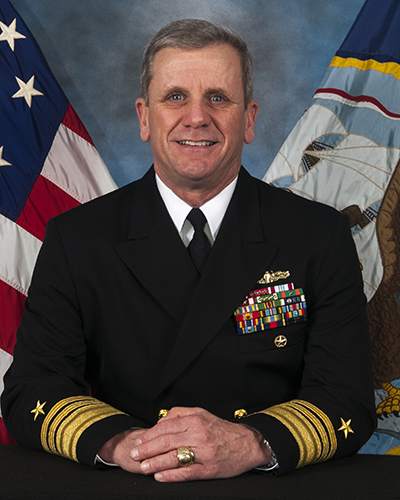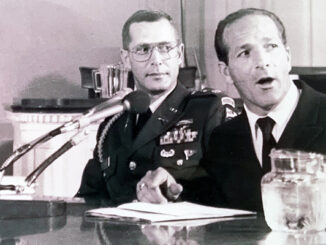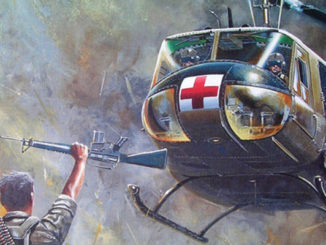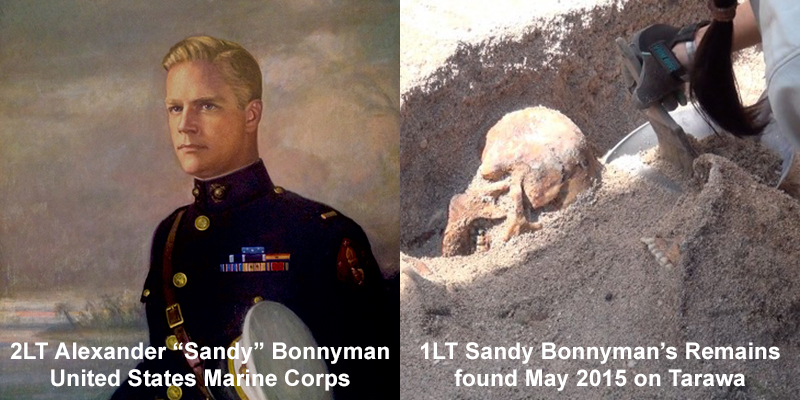
The surface fleet admiralty should be concerned, because according to an internal review, 85% of the junior officers have substandard ship-handling skills. In a stressful situation, many of the junior officers cannot react decisively to get their ship out of danger when a collision appears to be eminent.
The Navy suffered back-to-back collisions when the USS Fitzgerald collided with a container ship near Japan, and the USS McCain collided with an oil tanker approaching Singapore. Total, 17 sailors dead, many injured and billions in damage to ships of the line.

“Many of the decisions made that led to this incident were the result of poor judgment and decision making of the commanding officer,” one report concluded. “The crew was unprepared for the situation in which they found themselves through a lack of preparation, ineffective command and control, and deficiencies in training and preparations for navigation.”
The Navy’s Surface Warfare School conducted competency checks on underway navigation skills required when on the bridge of a ship. Random junior officers were selected. Of the 164 officers evaluated, only 27 passed with “no concerns.” Another 108 completed with “some concerns,” and 29 had “significant concerns,” according to Vice Adm. Richard Brown who called the results, “sobering.”
Many of the officers tested struggled with properly operating radar units causing them to lose situational awareness. While many officers appeared to have a fairly good knowledge of the international “rules of the road” for navigating ships at sea, they could not apply those rules of the road practically when in command on the bridge, especially at night or in low visibility situations.
Officers did OK in the simulators with “close encounters,” but could not take immediate and decisive action to avoid a collision. It’s no surprise the Fitzgerald and McCain collided. Officers failed to demonstrate adequate skill on the bridge and take appropriate decisive action to avoid the collisions. And, the senior leadership of the Navy failed to ensure our ships were staffed with properly trained personnel.
WHAT DOES IT MEAN TO BE – “DERELICT IN THE PERFORMANCE OF ONE’S DUTY?”
THE FOLLOWING ARE ELEMENTS OF DERELICTION…
DUTY – A duty may be imposed by treaty, statute, regulation, lawful order, standard operating procedure, or custom of the service.
KNOWLEDGE – Actual knowledge of duties may be proved by circumstantial evidence. Actual knowledge need not be shown if the individual reasonably should have known of the duties. This may be demonstrated by regulations, training or operating manuals, customs of the service, academic literature or testimony, testimony of persons who have held similar or superior positions, or similar evidence.
DERELICT – A person is derelict in the performance of duties when that person willfully or negligently fails to perform that person’s duties or when that person performs them in a culpably inefficient manner. “Willfully” means intentionally. It refers to the doing of an act knowingly and purposely, specifically intending the natural and probable consequences of the act.
“Negligently” means an act or omission of a person who is under a duty to use due care which exhibits a lack of that degree of care which a reasonably prudent person would have exercised under the same or similar circumstances. “Culpable inefficiency” is inefficiency for which there is no reasonable or just excuse.
INEPTITUDE – A person is not derelict in the performance of duties if the failure to perform those duties is caused by ineptitude rather than by willfulness, negligence, or culpable inefficiency, and may not be charged under this article, or otherwise punished. For example, a recruit who has tried earnestly during rifle training and throughout record firing is not derelict in the performance of duties if the recruit fails to qualify with the weapon.
GRIEVOUS BODILY HARM – “Grievous bodily harm” means serious bodily injury. It does not include minor injuries, such as a black eye or a bloody nose, but does include fractured or dislocated bones, deep cuts, torn members of the body, serious damage to internal organs, and other serious bodily injuries. Where the dereliction of duty resulted in death or grievous bodily harm, an INTENT to cause death or grievous bodily harm IS NOT REQUIRED.
Could it be possible that some of the leaders in the United States Navy were more concerned about being politically correct than with ensuring the competency of junior officers on the bridge of a man-of-war? We know that right now, the Navy is trying to figure out how to fund a third restroom on every installation and ship so that transgender sailors will have a place to go pee in privacy. And if there was dereliction of duty by the senior leaders of the Navy, why aren’t any of our flag-ranking surface officers being held accountable for their dereliction of duty?
If this were the Japanese Navy, and seventeen Japanese sailors lost their lives because of the incompetency of their officer core. Perhaps a Japanese admiral and a few of his staff members would be so distraught by the dishonor of failing at their assigned duty, they would commit seppuku, AKA: harakiri (切腹), ritual disembowelment. To the Japanese, losing 17 sailors and knocking two ships off the line is a matter of dishonor.
Well maybe the present day Japanese Self-Defense Force no longer employ those traditions, but some probably would resign, especially with seventeen dead, several who were killed as they slept. The United States Navy has a different approach. The admirals use their favorite word, “shortcomings,” and whole stream of junior officers will have to walk the plank or receive a ding or two on an officer fitness report.
Hopefully the Navy will introduce changes that will correct this downward trend. It’s time to go back to basics and reverse this dangerous trajectory.



